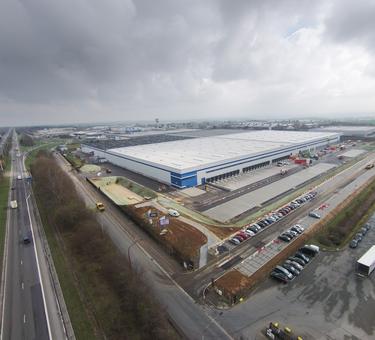Belgian magazine Online Retailer hosted its annual roundtable discussion about logistics and e-commerce in Brussels on 4 July 2018. Sander Breugelmans, vice president market officer Prologis Benelux, attended with others in the Belgian logistics and supply chain profession. Urban logistics quickly became the main topic of conversation.
The yearly event provides an opportunity to talk logistics in the context of the ever-growing e-commerce environment. The 14 guests—ranging from postal organizations, e-commerce specialists, and logistics and real estate professionals—covered many subjects, but the discussion focused on the most important aspect of e-commerce logistics: how to handle last-mile delivery and its impact on logistics and fulfilment services.
The importance of last-mile delivery, combined with customer expectations to receive products anytime and anywhere, is not new but it’s increasingly influencing delivery modes, as well as warehousing implementation and organization. Traditional large logistics buildings are still needed, but urban fulfillment is now in high demand.
In this regard, Prologis’ Last Touch® facilities offer two benefits: advancement of service capabilities and management of transportation costs. According to Breugelmans, “These together with a fundamental rethinking of warehouse organization are key if we want to satisfy the consumer. Belgium is no exception in this matter. Prologis is already developing Last Touch® pilot projects in San Francisco and Seattle, and this international experience will benefit the development of similar concepts here in Europe.”
Last Touch® Coupled with Regional Distribution is Key
Initially, e-commerce emphasized centralized locations that served customers over a broad geography (but deliveries were slow and expensive). Activity is now concentrated at the consumption end of the supply chain. Specifically, Prologis Research examined the recent changes in e-commerce and found demand is focused in two areas:
- Regional distribution
The growth of regional distribution centers, as opposed to centralized distribution models, allows online retailers to store inventory much closer to end consumers and meet the short delivery times that consumers expect. In addition, return centers are a growing and important part of the e-commerce ecosystem. Their proximity to major consumption centers helps manage the transportation portion of reverse logistics costs and recirculates inventories more quickly.
- Last Touch®
Last Touch® facilities in urban locations support city distribution. E-commerce has energized demand for these facilities, enabling rapid e-fulfilment and time-sensitive delivery. Last Touch® facilities are an extension of established supply chains, bringing goods to retail centers and storefronts, as well as offering higher service levels by facilitating transport all the way to where consumers live and work. In addition, these locations are ideal for local and small businesses, offering proximity to customers, suppliers and an ample workforce. In a Belgian context, with short overall distances, these facilities can be effective in larger urban environments, such as Brussels and Antwerp.
Read Prologis’ latest research paper, which is the first of a three-part series examining the latest consumer and supply chain trends driving logistics real estate.
